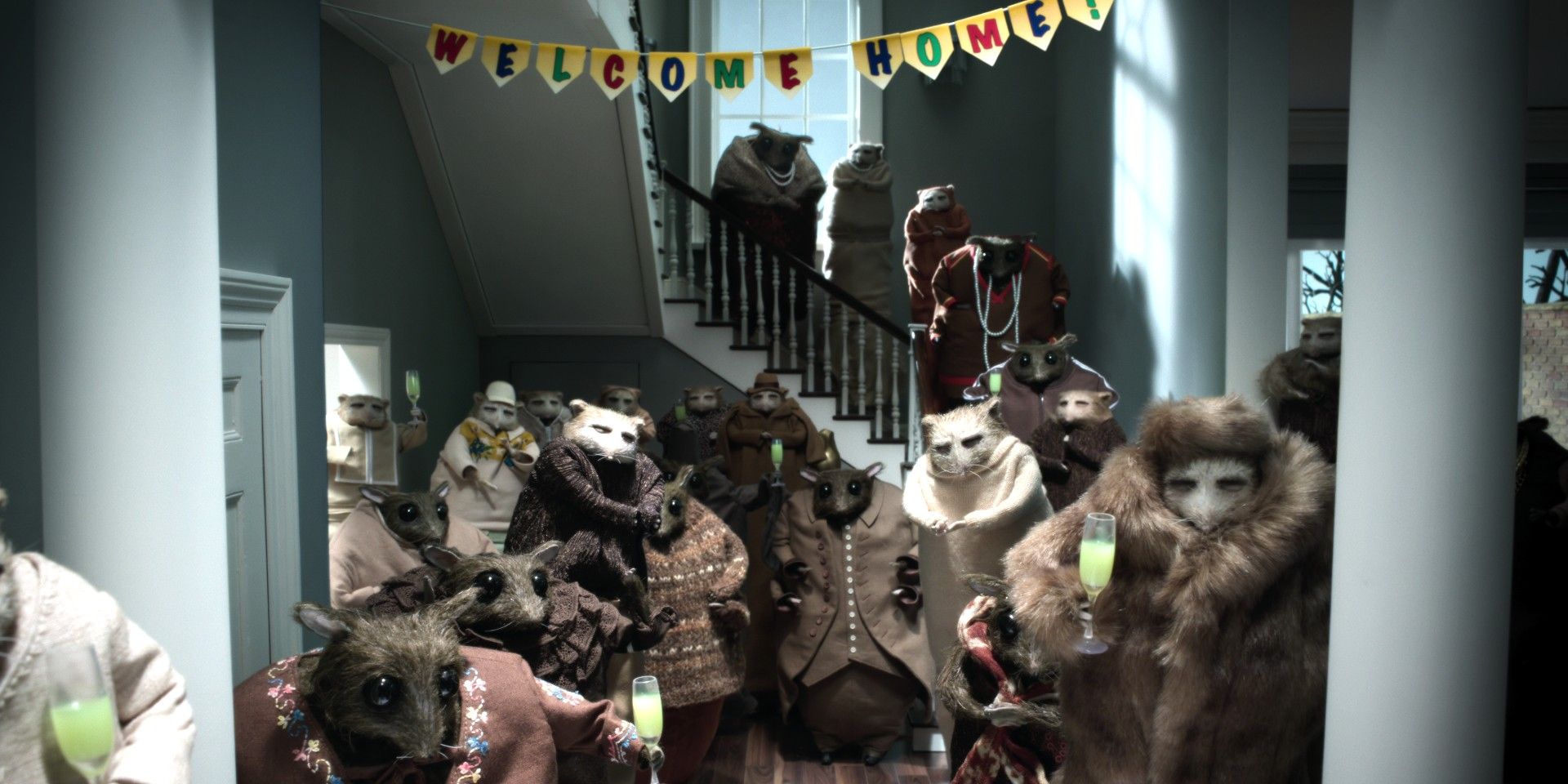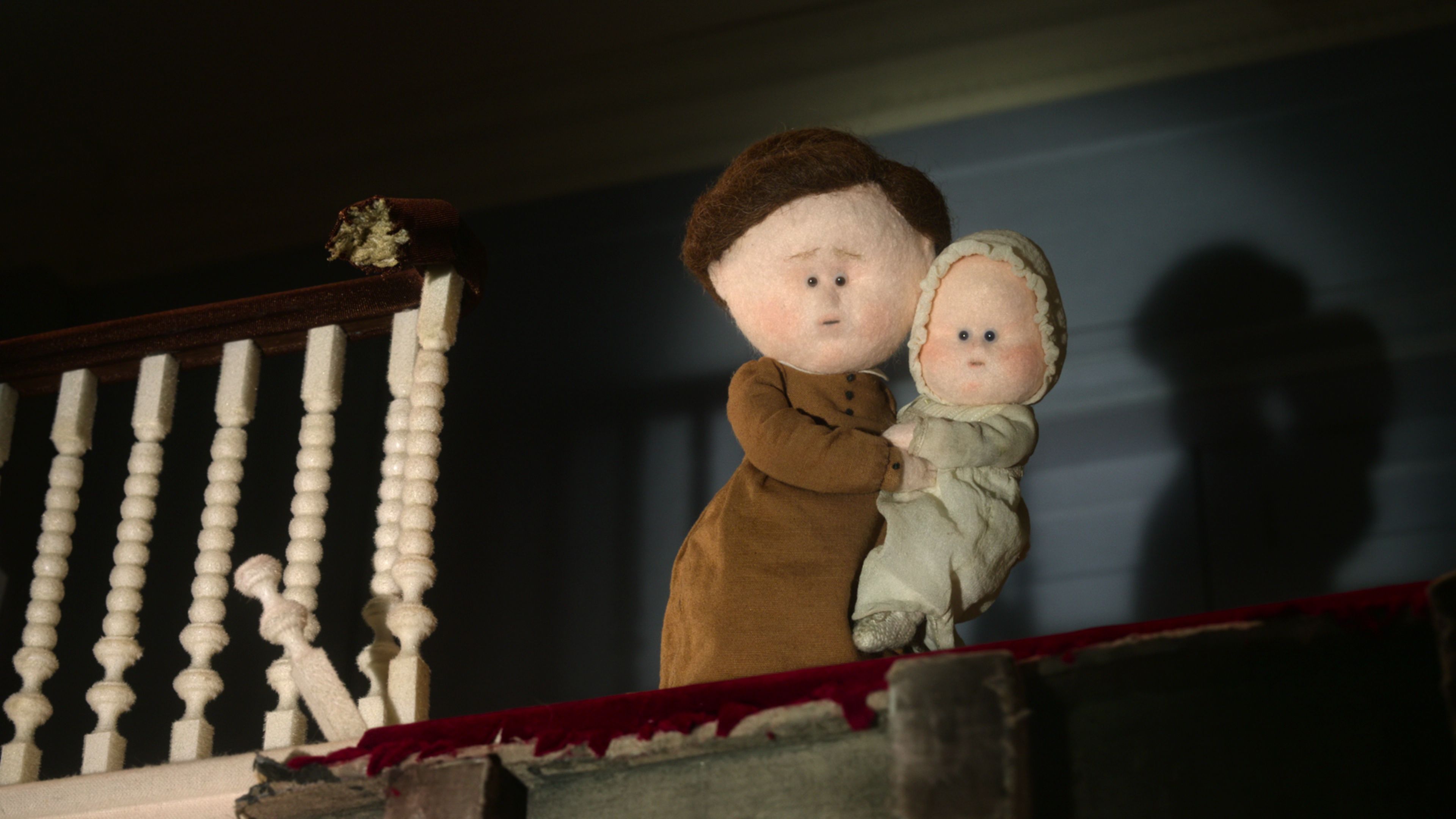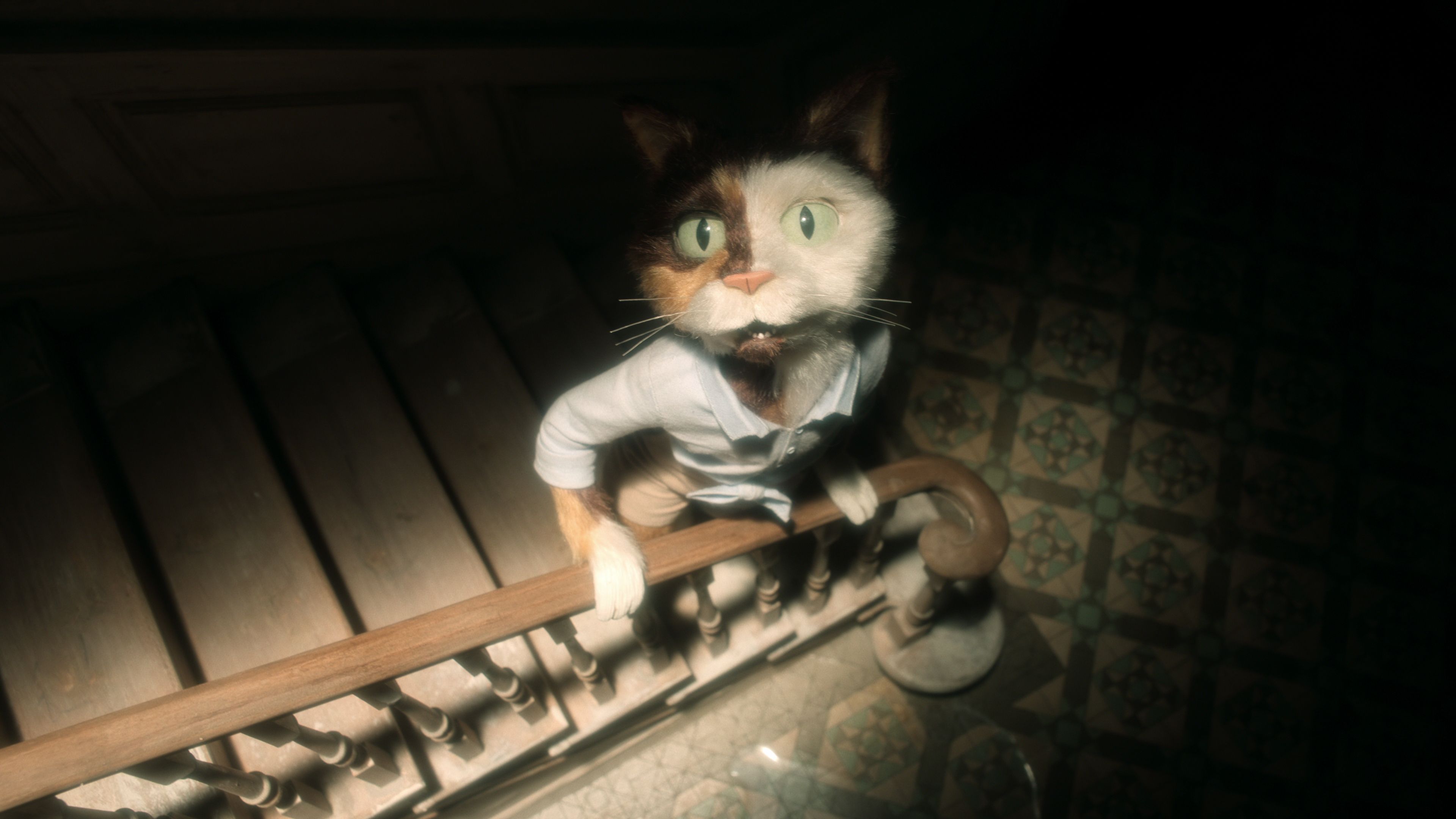There’s something about the tactile nature of stop-motion animation that makes it perfect for telling scary, surreal stories. Netflix’s new anthology movie The House continues a tradition that includes the works of Laika, Tim Burton and Czech filmmaker Jan Švankmajer, immersing viewers in an unsettling environment with a recognizable physical and supernatural presence. The House contains three segments, each directed by a different director. Despite the segments’ differing and unique directorial visions, the Netflix film finds unity with its setting and concepts – thanks to the efforts of screenwriter Enda Walsh.
As the title suggests, The House takes place in a home. The opening segment from Belgian directors Emma de Swaef and Marc James Roels begins with a bit of a faux pas about what this house will be like. The couple feature a family living in a modest country house in what looks like the 19th century. Father Raymond (Matthew Goode) comes from wealth but now lives modestly with his wife and two daughters. Raymond’s family members arrive to see the new baby and spend their time passively and aggressively disapproving of Raymond’s choices.
Later, in the woods surrounding the house, Raymond receives a tempting offer: a famous reclusive architect has bought all the land around the family cottage, and if they agree to give up their house and land, he will build them a sumptuous new home. , provided they agree to live there. It’s an obviously grim deal, but Raymond eagerly agrees, bringing his family to a fully furnished mansion. Raymond and his wife are ominously fascinated by the food that appears at every meal and the activities offered by their benefactor, but young Mabel (Mia Goth) is suspicious. The house is perpetually under construction, reminiscent of the famous real-life Winchester Mystery House.
De Swaef and Roels create their characters from what looks like felt with big round heads and small features. This design makes their characters look snarky even when serious and pleasant. The horrors of this segment slowly build, seen through the eyes of the innocent but shrewd Mabel, who sees the dangers her parents ignore or don’t understand. The terror comes from the atmosphere of the segment more than from specific incidents. The story builds to an unsettling effect that is stronger than any single haunting.
The HouseThe following segments are more surreal. From the mind of Swedish director Niki Lindroth von Bahr, The HouseThe second segment shows many crude horror moments. In this segment, the house is incongruously wedged in the middle of a modern city. Von Bahr makes his characters anthropomorphic rats, and the unnamed protagonist (Jarvis Cocker of the rock band Pulp) attempts to renovate the house into a modern luxury dwelling. He is nervous and nervous, having invested all his savings in this business.
The house, of course, has other ideas. He is still cursed, but this time sends hordes of insects which the developer unsuccessfully tries to kill. Later, a strange couple at the open house tell her that they are “very interested” in the house and refuse to leave. It’s a twisted metaphor for vermin infestation, and von Bahr uses his initially cuddly animated rats to subvert audience expectations. The segment is darkly humorous, from a full musical number about insects to a fun reveal about the person the protagonist keeps calling “sweetie” on the phone.
The HouseBritish director Paloma Baeza’s final segment offers glimmers of hope that are missing from the previous two dark stories. In an indefinite post-apocalyptic future, the town surrounding the house has been almost entirely submerged under water. The house, although built on top of a hill, is in danger of being submerged. That didn’t stop the last owner, Rosa (Susan Wokoma), from continuing her efforts to subdivide the house into rental apartments. There is clearly not much of a market for apartments in this water world-like an executive, and Rosa’s only two tenants, slacker Elias (Will Sharpe) and dreamy new-age Jen (Helena Bonham Carter) haven’t paid her in months. Baeza’s characters are all anthropomorphic cats, and they’re cuter and less threatening than von Bahr’s rats. However, they still fit into Walsh’s quirky world. The last segment ends the film on a soft but uncertain note.
Walsh doesn’t quite complete the story, but The House has a more cohesive thematic run than most anthology films. Globally, The House offers beautiful and unique visuals. Even though the second and third segments don’t have the same visceral impact as the first, the film is a showcase for up-and-coming animation talent, and it’s a delightfully bizarre viewing experience from start to finish.
Enter the stop-motion world of The House, which debuts on Netflix on Friday, January 14.



